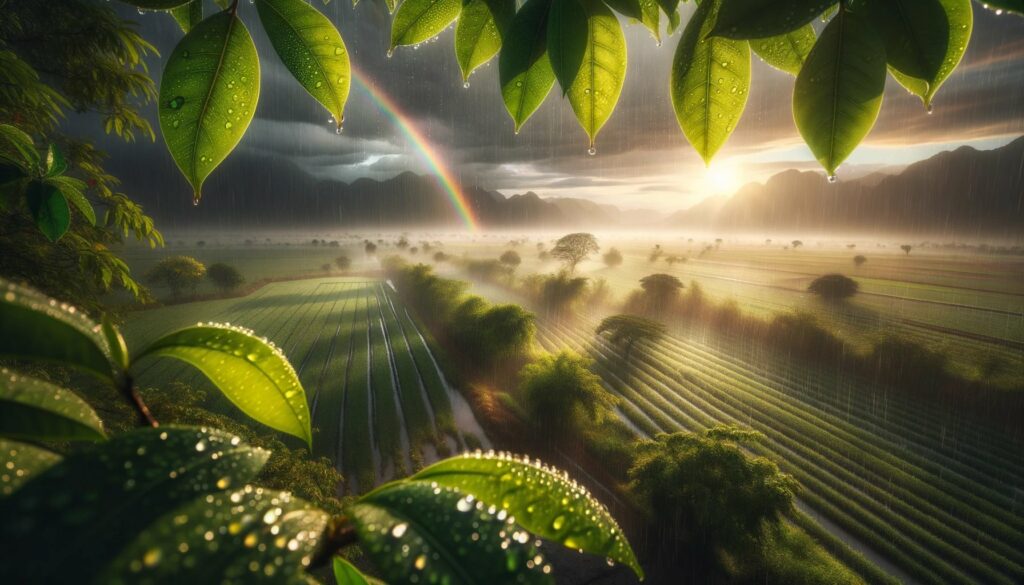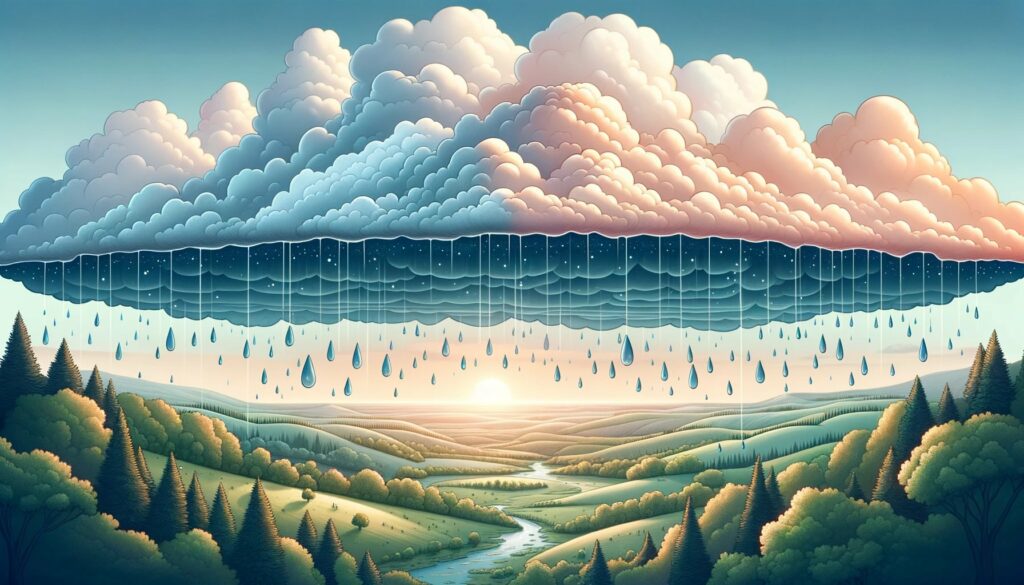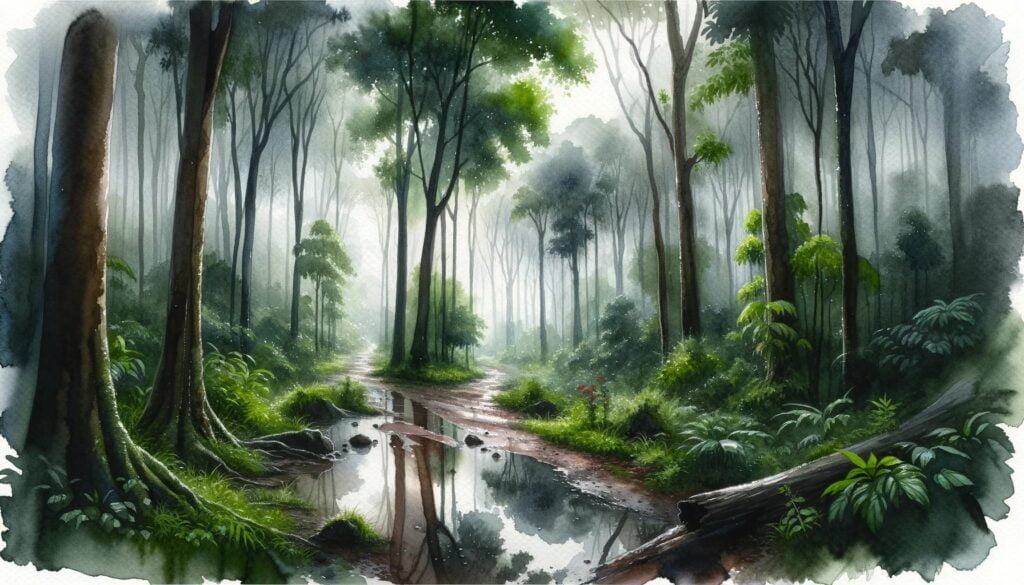Curious minds often ponder the origins of everyday words and phrases, seeking a deeper understanding of the language we use. In the realm of meteorology, one common inquiry arises: why is it called precipitation? Unveiling the significance behind this term is like embarking on a journey through the annals of atmospheric science. In this article, we will explore the etymology of precipitation, delving into its historical roots and unraveling the scientific importance it holds. Join us as we demystify this fundamental concept and shed light on its captivating origins.
Why is it called precipitation?
Have you ever wondered why we use the term “precipitation” to describe the water that falls from the atmosphere to the ground? Let’s dive into the etymology and explore the significance behind this meteorological term.
Origins of the Word “Precipitation”
The word “precipitation” originates from the Latin word “praecipitatio,” which means “a falling down.” This Latin term is derived from the verb “praecipitare,” which translates to “throw headlong” or “hurl down.” So, in a literal sense, precipitation refers to something that is thrown or hurled down from above.
Uncovering the Significance
Now that we understand the etymology of the term, let’s explore the significance of precipitation in the field of meteorology. Precipitation is a vital component of the Earth’s water cycle, playing a fundamental role in replenishing water sources and shaping our climate.
The Water Cycle and Precipitation
The water cycle is a continuous process that involves the movement of water between the Earth’s surface, the atmosphere, and back again. It starts with the evaporation of water from various sources such as oceans, lakes, forests, fields, animals, and plants. This evaporated water vapor then rises into the atmosphere.
As the water vapor ascends, it encounters colder temperatures at higher altitudes, causing it to condense and form tiny water droplets or ice crystals. These droplets or crystals collide and merge, growing larger and heavier until they become too heavy to stay aloft. This is when precipitation occurs, with the water droplets or ice crystals falling back to the ground under the influence of gravity.
Types of Precipitation
Precipitation comes in various forms, including rain, snow, sleet, freezing rain, ice pellets, graupel, and hail. Each type of precipitation has its own unique characteristics, influenced by factors such as temperature and the presence of supercooled water droplets or ice nuclei. Rain is the most common and familiar form of precipitation, but the others add diversity to our weather patterns.
Climate and Fresh Water Supply
Precipitation plays a crucial role in shaping Earth’s climate. It not only affects day-to-day weather conditions but also contributes to long-term climate patterns. By distributing heat within the atmosphere, precipitation helps regulate temperatures on a global scale.
Moreover, precipitation also acts as nature’s way of replenishing fresh water sources on Earth. It is responsible for depositing most of the fresh water we rely on, nourishing our rivers, lakes, and groundwater reserves. Without precipitation, our planet would lack the essential supply of fresh water necessary for supporting life.
Return Period or Frequency
In the field of meteorology, we often discuss the likelihood or probability of precipitation occurring within a specific intensity and duration. This is known as the return period or frequency. It helps us understand the average recurrence interval for a particular weather event, aiding in forecasting and preparing for extreme precipitation events like heavy rain or snowstorms.
Conclusion
Through the exploration of the etymology of the term “precipitation” and its scientific significance, we gain a deeper understanding of this fundamental meteorological concept. Precipitation, whether in the form of rain, snow, or other types, is an essential part of the water cycle and influences our climate. Its occurrence and distribution shape our environment and provide us with the precious resource of fresh water. So the next time you experience a rainy day or snowy landscape, remember the significance of precipitation in sustaining life on Earth.
The water cycle is a fascinating natural phenomenon that allows for the continuous movement and recycling of water on our planet. One crucial element of the water cycle is precipitation. Have you ever wondered what happens when water vapor in the atmosphere condenses and falls to the Earth as rain, snow, sleet, or hail? If so, you will find our article on precipitation in the water cycle incredibly enlightening. Click here to delve deeper into the intricacies of this captivating process: precipitation water cycle.
The Role of Precipitation in the Water Cycle
Have you ever wondered why it’s called precipitation? Delving into the etymology of this term uncovers its historical and scientific significance. So, let’s uncover the mysteries behind precipitation and explore its vital role in the water cycle.
What is Precipitation?
Precipitation is the process by which water falls from the clouds to the Earth’s surface in various forms, such as rain, snow, or ice. It is one of the key components of the water cycle, which also includes evaporation, transpiration, and condensation. Precipitation replenishes the sources of water on both land and in the oceans, providing the essential moisture needed by plants and animals.
The Water Cycle and Precipitation
To understand the role of precipitation, we must first grasp the concept of the water cycle. The water cycle involves the continuous movement of water between the Earth’s surface and the atmosphere. It begins with the evaporation of water from the surface, which rises as water vapor into the atmosphere. As the water vapor cools and condenses, it forms droplets or ice crystals, leading to the creation of clouds. Eventually, these condensed droplets or crystals become heavy enough to fall as precipitation back to the ground, where the cycle restarts.
The Significance of Precipitation
Precipitation plays a crucial role in maintaining the delicate balance of Earth’s ecosystems. It acts as a vital link, connecting the ocean, land, and atmosphere. By understanding where and how much precipitation occurs, scientists can gain insights into its impact on streams, rivers, surface runoff, and groundwater. This knowledge is essential for sustainable water management and predicting the behavior of natural systems.
Precipitation is not just limited to rain. It can take various forms, including drizzle, snow, sleet, freezing rain, ice pellets, graupel, and hail. Each type has its unique characteristics and occurs under specific atmospheric conditions.
Measuring Precipitation
Scientists employ a range of techniques to measure precipitation. Rain gauges are commonly used to collect rainwater, while snowfall is measured using specialized equipment. Return period or frequency is also employed to evaluate the likelihood or probability of precipitation events occurring. These measurements provide valuable data for climate studies and weather forecasting.
The Impact of Precipitation
Precipitation has a significant impact on shaping our climate and plays a vital role in sustaining life on Earth. It helps regulate global temperatures by redistributing heat and moisture. Additionally, precipitation plays a crucial role in replenishing freshwater sources, which are essential for both human consumption and supporting terrestrial ecosystems.
Conclusion
In conclusion, precipitation is much more than just water falling from the sky. Its etymology traces back to its Latin root, meaning “a falling down.” Precipitation is a fundamental process in the water cycle, replenishing our water sources and shaping our climate. By understanding the role of precipitation, we can better appreciate its significance in sustaining life on Earth. So, the next time you see raindrops or snowflakes falling, remember the essential role they play in our world.
Remember, understanding the role of [The role of precipitation in the water cycle] is crucial. It connects the dots of how water moves within our planet and affects various aspects of life.
Importance and Impact of Precipitation on Daily Life and Ecosystems
Precipitation, the process by which water falls from the clouds to the Earth’s surface, is an essential natural phenomenon that significantly affects daily life and ecosystems. But have you ever wondered why it’s called “precipitation”? In this article, we will uncover the etymology and explore the historical and scientific significance of this term. Let’s dive in!
The Etymology of Precipitation
The word “precipitation” originates from the Latin word “praecipitatio,” meaning “a falling down.” This term perfectly encapsulates the act of water droplets or ice crystals falling from the atmosphere to the Earth’s surface. Understanding the etymology of “precipitation” helps us appreciate the concept’s fundamental nature and its impact on our world.
The Role of Precipitation in Ecosystems
Precipitation and Ecosystem Maintenance
Precipitation plays a crucial role in maintaining the delicate balance of ecosystems. It provides the necessary moisture for the growth and development of plants, which are the foundation of terrestrial ecosystems. The moisture from precipitation replenishes water sources on land, sustaining rivers, lakes, and groundwater that support diverse flora and fauna.
Changing Precipitation Patterns and Ecosystem Consequences
Changing precipitation patterns have far-reaching consequences for ecosystems. It can alter regional temperatures and humidity, as well as affect terrestrial ecosystem productivity, biomass, species ranges, and population sizes. Ecosystems are intricately interconnected, and any shifts in precipitation patterns can disrupt delicate ecological relationships, leading to the decline or loss of certain species.
The Amazon Forest: A Case Study
Take, for instance, the Amazon rainforest, known as the “lungs of the Earth.” The future of this vibrant ecosystem depends not only on annual precipitation but also on a warmer climate. As temperatures rise, plants require more water for growth. Understanding the relative roles of climate and human land use in the Amazon becomes crucial for predicting the forest’s fate. By examining precipitation patterns, researchers can gain insights into the forest’s ability to adapt and survive in a changing climate.
Exploring the Global Water Cycle
To grasp the true significance of precipitation, let’s delve into the global water cycle. Precipitation is one of the three major parts of this continuous cycle, along with evaporation and condensation.
The Water Cycle and Earth’s Lifeline
The water cycle represents the never-ending movement of water between the Earth’s surface and the atmosphere. It begins with the evaporation of water from oceans, lakes, and rivers, converting it into water vapor. This vapor rises into the atmosphere, where it undergoes condensation, transforming into droplets or ice crystals. Finally, these condensed particles form precipitation, falling back to Earth and replenishing water sources.
Precipitation’s Role in Replenishment and Climate Shaping
Precipitation is vital for replenishing freshwater sources on Earth. It refills rivers, streams, and underground aquifers that provide essential drinking water for humans and countless other life forms. Additionally, precipitation helps regulate global temperatures by redistributing heat and moisture across different regions, shaping climate patterns on both regional and global scales.
Precipitation Forms and its Impact
It’s important to recognize that precipitation can take various forms, including rain, snow, sleet, freezing rain, ice pellets, graupel, and hail. Each form has its unique characteristics and impacts on daily life and ecosystems.
The Impact of Different Precipitation Types
Persistent rain showers can create lush and verdant landscapes, while snowfall blankets the wintery scenes we often associate with the holiday season. On the other hand, extreme forms of precipitation, such as hailstorms, can cause significant damage to crops, buildings, and vehicles. In regions where water scarcity is a concern, even a light drizzle can bring relief and ensure the survival of both plants and animals.
Conclusion
In conclusion, precipitation is an integral part of our daily lives and plays a vital role in shaping Earth’s ecosystems. Understanding the etymology and significance behind the term “precipitation” helps shed light on its importance in the context of the global water cycle, ecosystem maintenance, and climate regulation. By appreciating the impact of precipitation on the natural world, we can work towards sustainable water management, protect vulnerable ecosystems, and adapt to the changing climate. Remember, every drop of precipitation carries immense significance for our planet and the web of life that depends on it.
FAQ
What is precipitation?
Precipitation is a form of water that falls from the atmosphere to the ground. It occurs when a portion of the atmosphere becomes saturated with water vapor and the water condenses and falls.
What are the different types of precipitation?
Precipitation can include forms like drizzle, rain, sleet, snow, ice pellets, graupel, and hail.
Is fog considered precipitation?
No, fog is not considered precipitation because the water vapor does not condense sufficiently.
Why is precipitation important?
Precipitation is an essential part of the water cycle and affects the climate. It is responsible for depositing most of the fresh water on Earth, replenishing water sources, and providing the moisture required by plants and animals.
How does precipitation impact ecosystems?
Precipitation plays a significant role in the maintenance of ecosystems. It affects terrestrial ecosystem productivity and biomass, species ranges, and population sizes. Changing precipitation patterns can have consequences for ecosystems and impact various ecosystem processes.
- Crypto Quotes’ Red Flags: Avoid Costly Mistakes - June 30, 2025
- Unlock Inspirational Crypto Quotes: Future Predictions - June 30, 2025
- Famous Bitcoin Quotes: A Deep Dive into Crypto’s History - June 30, 2025



















